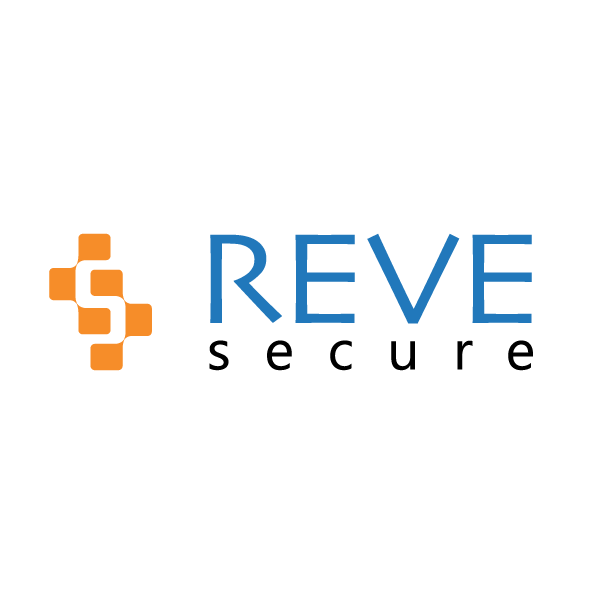Description

WhiteSource

Resolver Incident Management

REVE Secure
Comprehensive Overview: WhiteSource vs Resolver Incident Management vs REVE Secure
WhiteSource
a) Primary Functions and Target Markets:
-
Primary Functions: WhiteSource is an open-source security and license compliance management tool. It helps organizations automate the process of open-source component selection, approval, tracking, and security vulnerability management. It integrates with development environments to detect open-source software (OSS) components and provides insights into security vulnerabilities, licensing issues, and outdated libraries.
-
Target Markets: The primary target market for WhiteSource includes software development companies, IT departments in various industries that use open-source software, and organizations that need to manage software compliance and security at scale.
b) Market Share and User Base:
-
Market Share: WhiteSource is considered a leader in the open-source security management space, competing with other players like Snyk, Black Duck, and Veracode. While specific market share data is proprietary, WhiteSource is well-regarded and widely adopted by medium to large enterprises across different sectors.
-
User Base: WhiteSource has a significant user base, primarily among enterprise-level clients and development teams looking to ensure open-source security and compliance.
c) Key Differentiating Factors:
-
Deep Integration: Extensive integrations with numerous development environments and continuous integration/continuous deployment (CI/CD) pipelines.
-
Comprehensive Coverage: Broad database of open-source components, facilitating robust license and vulnerability management.
-
Automation: Strong automation capabilities for license compliance and vulnerability management.
Resolver Incident Management
a) Primary Functions and Target Markets:
-
Primary Functions: Resolver Incident Management provides tools for documenting and managing incidents, tracking risks, and reporting. It is primarily used for risk management, helping organizations to improve their incident reporting processes, analyze incidents, mitigate risks, and ensure compliance with regulatory requirements.
-
Target Markets: The target market for Resolver includes large enterprises and organizations in sectors such as finance, healthcare, logistics, and any other fields where risk and compliance management are critical.
b) Market Share and User Base:
-
Market Share: Resolver is a recognized name in the incident and risk management solutions sector, competing with products like ServiceNow, IBM OpenPages, and Diligent. Market share specifics are typically kept confidential by such service providers, but Resolver has a strong presence in enterprise markets.
-
User Base: Resolver has a diverse user base, often comprised of large organizations needing comprehensive incident and risk management solutions.
c) Key Differentiating Factors:
-
Unified Solution: Combines incident and risk management into one platform, enhancing its appeal to organizations seeking a comprehensive solution.
-
Customization Capabilities: High level of customization to tailor incident management workflows to specific organizational needs.
-
Ease of Use: User-friendly interface that simplifies complex incident management processes.
REVE Secure
a) Primary Functions and Target Markets:
-
Primary Functions: REVE Secure specializes in cybersecurity solutions, including network security, endpoint security, and secure VPN services, primarily focused on protecting against malware, ransomware, and other cyber threats. It aims to provide a robust cybersecurity framework for organizations.
-
Target Markets: The target market for REVE Secure includes small to medium-sized enterprises (SMEs), though it also serves larger enterprises needing comprehensive cybersecurity solutions. It often caters to industries like telecom, finance, and healthcare.
b) Market Share and User Base:
-
Market Share: While not as large as major players like Symantec or McAfee, REVE Secure has carved a niche in cybersecurity markets, especially among SMEs. It focuses on providing cost-effective solutions with advanced security features.
-
User Base: Its user base primarily includes smaller and medium-sized organizations, though a number of larger entities might use its specialized solutions as part of a broader security strategy.
c) Key Differentiating Factors:
-
Cost-Effectiveness: Offers affordable security solutions, making advanced cybersecurity accessible to smaller businesses.
-
Comprehensive Security Solutions: Provides a broad range of security functionalities, from VPNs to endpoint protection, within a single solution set.
-
Focus on Secure Communication: Strong emphasis on secure communication solutions, including VOIP encryption and VPN security, which is particularly appealing to telecom sectors.
In summary, WhiteSource excels in open-source security and compliance, Resolver is distinguished by robust incident and risk management capabilities, and REVE Secure provides comprehensive and cost-effective cybersecurity solutions, especially beneficial for SMEs. Each product serves slightly different markets and customer needs, contributing to their unique positions in the respective sectors.
Contact Info

Year founded :
Not Available
Not Available
Not Available
Not Available
Not Available

Year founded :
Not Available
Not Available
Not Available
Not Available
Not Available

Year founded :
2016
Not Available
Not Available
Singapore
http://www.linkedin.com/company/reve-secure
Feature Similarity Breakdown: WhiteSource, Resolver Incident Management, REVE Secure
To provide a feature similarity breakdown for WhiteSource, Resolver Incident Management, and REVE Secure, we must consider each product category, as they serve somewhat different core purposes but share overlaps in certain security domains.
a) Core Features in Common
WhiteSource
- Primary Focus: Open Source Security and License Compliance.
- Core Features:
- Automated open-source component detection.
- Vulnerability management.
- License compliance management.
- Continuous library tracking and updates.
Resolver Incident Management
- Primary Focus: Incident Management and Risk Management.
- Core Features:
- Incident capturing and reporting.
- Risk assessment tools.
- Workflow automation for incident response.
- Analytics and reporting for incidents.
REVE Secure
- Primary Focus: Network Security.
- Core Features:
- Firewall capabilities.
- Intrusion detection and prevention.
- Real-time threat monitoring.
- Network traffic analysis.
Common Features Across All Three:
- Security Management: Each product provides tools for some aspect of security management, whether through vulnerability tracking, incident response, or threat detection.
- Reporting and Analytics: All three products offer mechanisms to generate reports and analytics over the data they capture and manage.
- Automation: Features involving automation, such as automatic alerts or updates, are present, as they help streamline security workflows.
b) User Interface Comparison
-
WhiteSource: Generally intuitive UI tailored for developers and IT personnel, focusing on dashboards that show vulnerabilities and compliance issues. Clarity in presenting developers with actionable insights as they work.
-
Resolver Incident Management: Typically features a rich, user-friendly interface oriented towards operations and security teams. It emphasizes workflow visualizations for incident lifecycle management and provides robust filtering and sorting tools for incidents.
-
REVE Secure: Often showcases a technical and straightforward interface designed for IT specialists. Prioritizes real-time data dashboards and displays detailed logs for network traffic and security events.
Overall, while WhiteSource and REVE Secure may cater to more technical audiences, focusing on precise details pertinent to developers and IT security personnel, Resolver offers a more holistic risk management and administrative-focused interface, suitable for enterprise security management.
c) Unique Features
-
WhiteSource: Unique in its focus on open-source component management and license compliance, allowing organizations to maintain control over the open-source libraries they incorporate into their code.
-
Resolver Incident Management: Distinct for offering full-spectrum incident and risk management capabilities within enterprise systems, including not only digital/cyber incidents but also physical security events and broader risk factors.
-
REVE Secure: Offers unique network security capabilities like advanced firewall settings and detailed network monitoring tools, distinct from the software-focused security solutions of WhiteSource or incident/risk-specific tools of Resolver.
When comparing these products, it is crucial to align the specific use-cases and security needs of an organization with the unique strengths of each platform.
Features

Not Available

Not Available

Not Available
Best Fit Use Cases: WhiteSource, Resolver Incident Management, REVE Secure
a) WhiteSource
Best Fit Use Cases:
-
Software Development Companies: WhiteSource is ideal for companies involved heavily in software development. It helps manage open-source components by providing tools for software composition analysis, ensuring compliance and security.
-
Enterprise IT Departments: Businesses with extensive IT departments that manage multiple software projects can greatly benefit from WhiteSource for robust license compliance and vulnerability detection.
-
Industries with Compliance Needs: Organizations in regulated industries such as healthcare, banking, and government, where software compliance is critical, will find WhiteSource particularly useful.
Catering to Various Industry Verticals and Company Sizes:
- SMEs to Large Enterprises: Regardless of size, any company looking to manage open-source code usage benefits from WhiteSource.
- Tech-Savvy Industries: Particularly beneficial for tech-forward sectors like fintech, e-commerce, and SaaS providers.
b) Resolver Incident Management
Preferred Scenarios:
-
Large Corporations with Complex Operations: Companies that deal with numerous and varied incidents—such as utilities, manufacturing, and transportation—will find Resolver valuable for structured incident management.
-
Organizations with High Security and Risk Requirements: Businesses needing robust risk management and incident handling practices, like healthcare and financial institutions, gain from Resolver’s comprehensive approach.
-
Entities with Regulatory Obligations: Companies that must adhere to strict governance, risk, and compliance standards can use Resolver to remain audit-ready and compliant.
Catering to Various Industry Verticals and Company Sizes:
- Enterprises with Large Workforce: Best suited for large organizations that require a scalable incident management system.
- Industry-Specific Needs: Tailored solutions for verticals like healthcare, finance, and energy, where incident management is crucial.
c) REVE Secure
Considerations for Use:
-
Telecoms and IT Service Providers: Given REVE Secure’s focus on cybersecurity, it is suitable for businesses specializing in communications technology and IT services seeking to enhance their network protection.
-
Organizations Requiring Multi-layered Security: Businesses that require VPN services, firewall protection, and other cyber defense mechanisms across various industries can use REVE Secure for comprehensive solutions.
-
SMEs Seeking Cost-Effective Security Solutions: Small and medium-sized enterprises looking for affordable yet robust cybersecurity protections may find REVE Secure advantageous.
Catering to Various Industry Verticals and Company Sizes:
- Small to Medium Enterprises: With scalable offerings, it suits businesses looking to protect their digital assets with a focus on cost efficiency.
- Varied Industry Application: Useful across industries that prioritize digital security such as finance, healthcare, and retail, offering adaptable solutions for each sector.
In summary, each of these products addresses different needs within organizations. WhiteSource excels in software compliance and security, Resolver is robust for incident management and risk handling, while REVE Secure offers extensive cyber protection suitable for telecoms and other sectors requiring intensive cybersecurity solutions. This diversity allows them to cater effectively to varying company sizes and industry demands.
Pricing

Pricing Not Available

Pricing Not Available

Pricing Not Available
Metrics History
Metrics History
Comparing undefined across companies
Conclusion & Final Verdict: WhiteSource vs Resolver Incident Management vs REVE Secure
When comparing WhiteSource, Resolver Incident Management, and REVE Secure, the best selection largely depends on the specific needs and priorities of the organization. Below is a conclusion and final verdict based on each product’s strengths and weaknesses:
Conclusion
a) Best Overall Value
Considering all factors—such as functionality, usability, integration capabilities, cost, and support—WhiteSource offers the best overall value for organizations primarily focused on open-source software security and compliance. However, if an organization is more focused on incident response and management, Resolver Incident Management could provide greater value, especially in environments needing robust incident tracking and analytics. For enterprises where comprehensive digital security across network and endpoints is critical, REVE Secure could demonstrate significant value, although it’s more niche in its coverage compared to the broad applicability of WhiteSource.
b) Pros and Cons
WhiteSource
- Pros:
- Comprehensive coverage for open-source security and vulnerability management.
- Strong integration with development tools, enhancing DevSecOps workflows.
- Provides detailed reporting for compliance and audit purposes.
- Cons:
- May not cover non-open-source applications as thoroughly.
- Requires understanding of security and development practices for optimal use.
Resolver Incident Management
- Pros:
- Excellent for managing and automating responses to security incidents.
- Provides strong analytics and reporting capabilities to measure and improve security posture.
- User-friendly interface with customizable workflows.
- Cons:
- Primarily focused on incident management, which may not serve other security needs.
- Could be seen as costly if the primary need is not around incident response.
REVE Secure
- Pros:
- Robust security across networks, endpoints, and communications, suitable for broad digital protection.
- Offers features like multi-layer protection, endpoint protection, and mobile security.
- Generally easy to deploy and manage with centralized control.
- Cons:
- May not provide detailed vulnerability scanning or software composition analysis compared to WhiteSource.
- Less specialized for incident management compared to Resolver.
c) Specific Recommendations
-
For organizations focusing on software development: Prioritize WhiteSource due to its capabilities in managing open-source vulnerabilities and compliance. This is especially critical for businesses integrating open-source in their software development lifecycle.
-
For businesses emphasizing incident management and response: Choose Resolver Incident Management. Its strength lies in efficiently managing and automating incident responses, making it ideal for businesses with a dedicated security operations team.
-
For entities needing extensive network and endpoint security: Consider REVE Secure, as it provides strong, all-encompassing protection that suits a wide defensive stance needed by organizations with diverse security needs without a primary focus on software development.
Ultimately, the decision should account for organizational objectives, existing technologies, and specific security priorities to ensure an ideal fit for the chosen security tool.